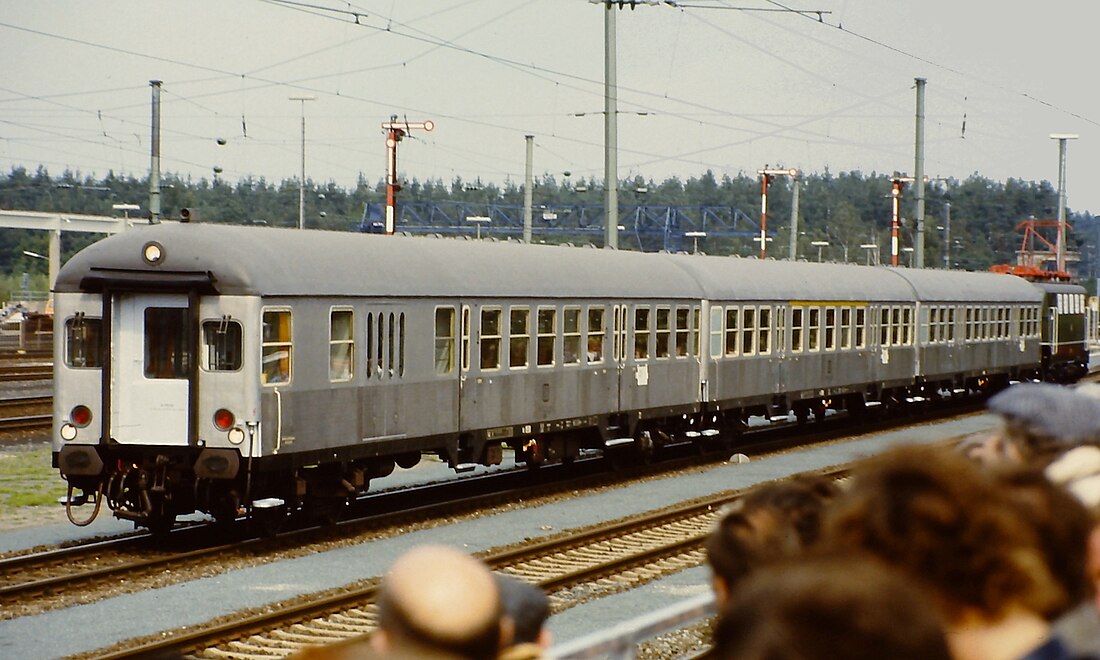Top Qs
Timeline
Chat
Perspective
N-Wagen
From Wikipedia, the free encyclopedia
Remove ads
The n-Wagen ("n-coaches") are a type of passenger coach used by Deutsche Bundesbahn and subsequently Deutsche Bahn. With two double-leafed doors per side to enable a high passenger throughput rate, the coaches were conceived for short dwell times in commuter and regional transit. Succeeding the yl-coaches, 5,000 units were built from 1958 to 1981, with some remaining in service still today.
You can help expand this article with text translated from the corresponding article in German. (June 2017) Click [show] for important translation instructions.
|

Remove ads
Origin of the name
The UIC classification identifier letter "n" is an abbreviation for Nahverkehr ("local transit"); the complete description is local transit passenger coach (Nahverkehrswagen) with a length of over 24.5 meteres, open coach with centre aisle in 2nd class, centre aisle or side corridor in 1st class, two centre doors, with 36-pole control cable for push-pull operations.
The term Silberling (from German Silber, "silver") derives from the coaches' stainless steel body, which was originally unpainted, giving them a unique silver look.
Remove ads
Technical data
| Total length: | 26,400 mm |
| Distance between bogie pivots: | 21,500 mm |
| Empty weight: | 42-47 t |
| Maximum speed: | 120 or 140 km/h (varies by type) |
| Number of seats: | 96 seats in second class in Bn coaches 2×24 seats in second and 30 in first class in ABn coaches. |
Type overview
- Indicator z: Central control (Zugsammelschiene)
- Indicator r: disc brakes
Remove ads
See also
Wikiwand - on
Seamless Wikipedia browsing. On steroids.
Remove ads

